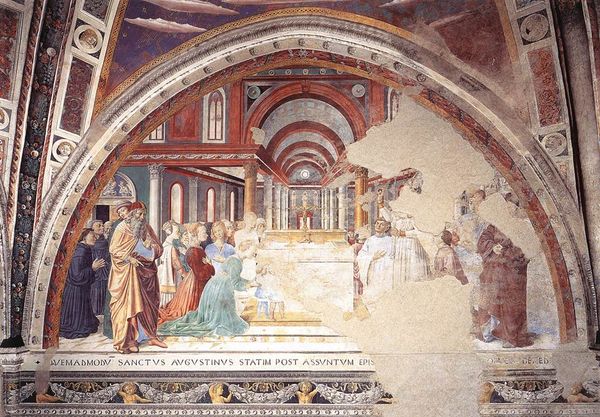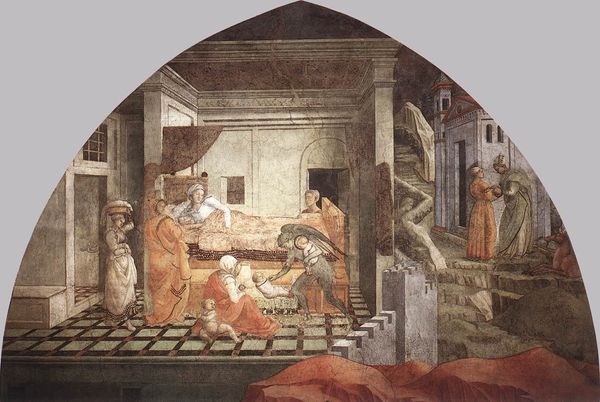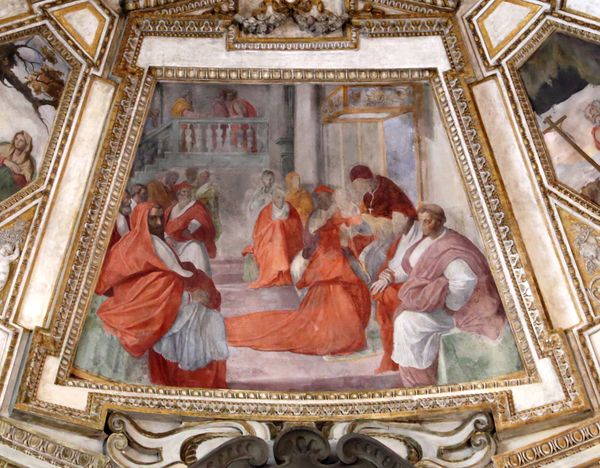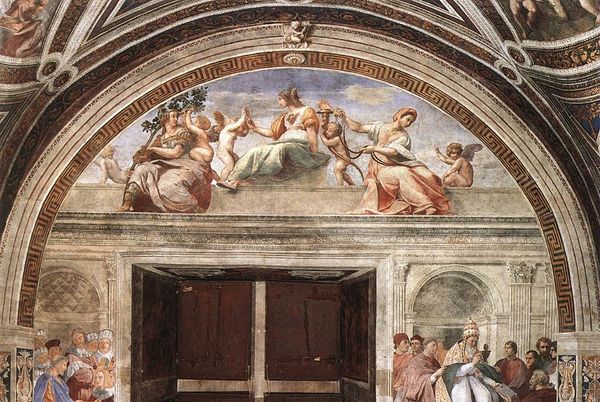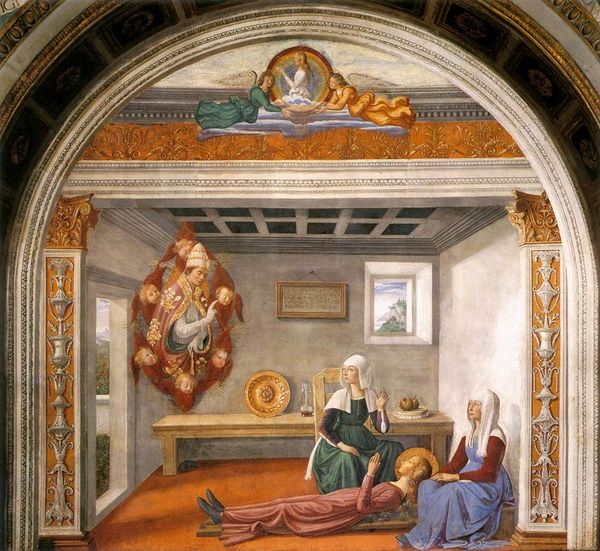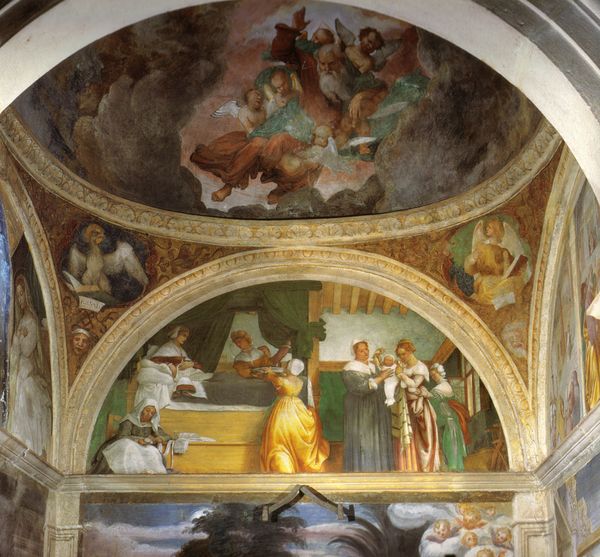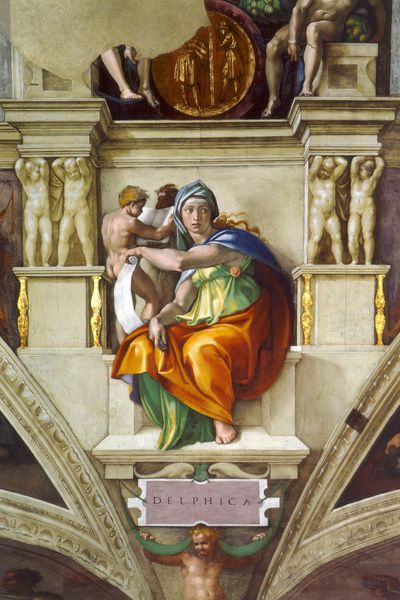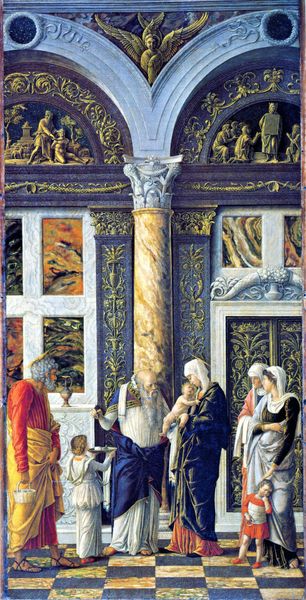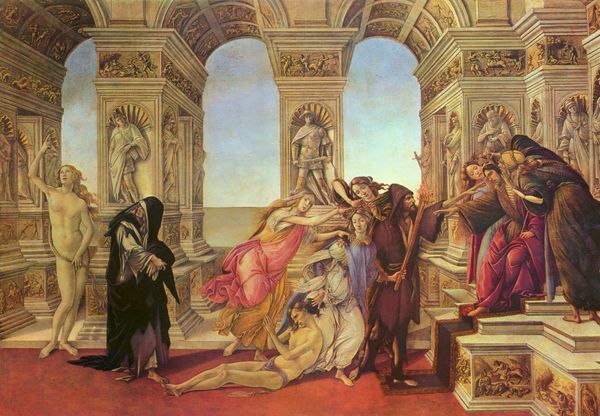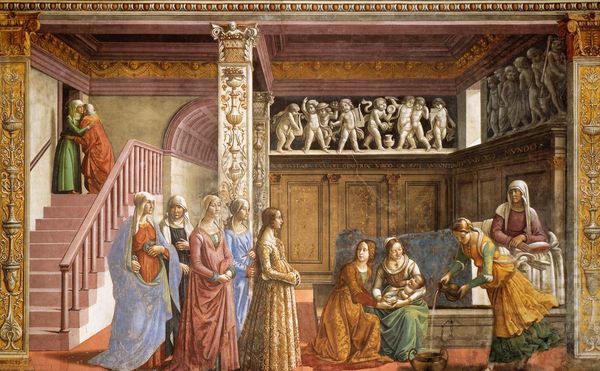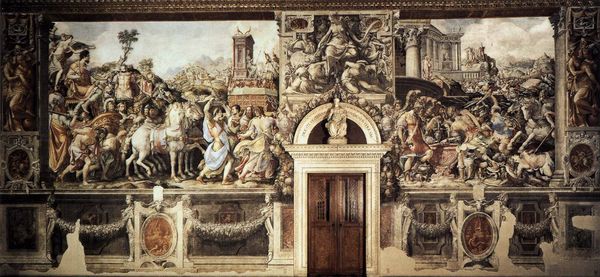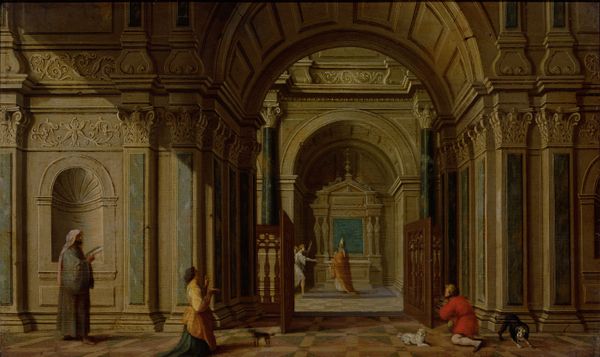
painting, fresco
#
portrait
#
painting
#
sculpture
#
landscape
#
holy-places
#
figuration
#
historic architecture
#
fresco
#
arch
#
christianity
#
mythology
#
history-painting
#
italian-renaissance
#
virgin-mary
#
angel
Copyright: Public domain
Filippo Lippi painted this Annunciation during the early Renaissance in Florence. Lippi has taken a traditional subject and placed it in a contemporary, and very Florentine, architectural setting. If we consider the social conditions that made this image possible, we have to acknowledge the wealth of Florence and the patronage of the church. But the idea of patronage also shaped the image in other ways. While sacred, we can see that Lippi has given Mary the features of a fashionable Florentine woman. He has, perhaps, presented her as an ideal for the women of Florence to emulate. The challenge for the historian is to look at these paintings not just as religious objects, but as social documents. Looking at records of dress, architecture and social behaviour can reveal how artists like Lippi were commenting on the world around them. The Annunciation becomes, then, a window into the values and aspirations of Renaissance Florence.
Comments
No comments
Be the first to comment and join the conversation on the ultimate creative platform.
